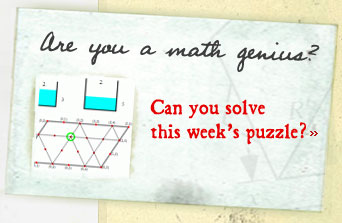



Amita holds the diamond up to the light.
ENTER AUDIENCE VISION:
The diamond transforms into a CUT DIAMOND, sparkling.
AMITA (cont'd)
A diamond is a crystal, its atoms
arranged in a symmetrical
structure.
ZOOM INSIDE THE DIAMOND -- revealing the crystalline
structure of the carbon atoms -- creating regular cubes.
AMITA (cont'd)
Optic crystallographic analysis
shines a polarized light from an
electron microscope into the
crystal structure --
RAYS OF LIGHT blast through the CRYSTALLINE STRUCTURE and
break off at thousands of angles as they collide with atoms.

This Demonstration shows a
perspective
rendering of
disks or
spheres in a
cubic lattice. In order to view the rendering
correctly, the eye should be directly above the center of the image, exactly one half of the width of the window away
from the screen. Interestingly, the image with
circles really is a perspective image of disks in space; when viewed from the correct vantage point,
these are squashed into
ellipses. On the other
hand, spheres are drawn as elongated ellipses that appear to be perfectly circular when viewed correctly.
Larry studies an enlarged image of the listening device on a
screen. Amita studies the real thing through an evidence bag.
AMITA
To get past the electronic shield
that was installed in the store,
this device was wired to a small
satellite dish on the roof. That
way it sends a signal to a
satellite, which in turn relays it
to a receiver on the ground.

The Clarke Belt represents the position over the equator where an orbiting satellite will
remain in a fixed position over the Earth, 22,300 miles (35,786 km) up. Arthur Clarke suggested the usefulness of
geosynchronous orbits in 1945.
LARRY
No, it's not the case. I've got a
vector problem tracking an
unidentified subatomic particle
across a complex energy field.

The four components of the potential of a point charge are used to compute various electric and magnetic properties. The system
is rotationally symmetric. The charge enters the observation plane, passes the origin with positive speed, then leaves the
observation plane. The electric and magnetic field vectors, the Poynting vector, and the energy density are displayed on the
observation plane.
Ian chuckles. Larry lines up a shot, evaluating the angles.
LARRY
Particle physicists like to use
pool balls to describe the actions
of sub-atomic elements -- but I can
assure you that these massive
spheres behave in a far more
predictable, Newtonian manner.
Now, if this cue ball had the
characteristics of a boson --








